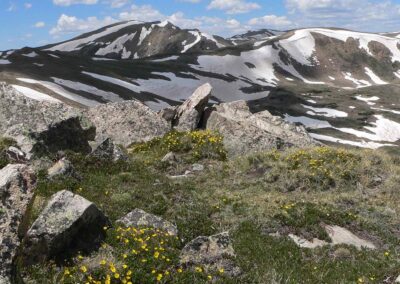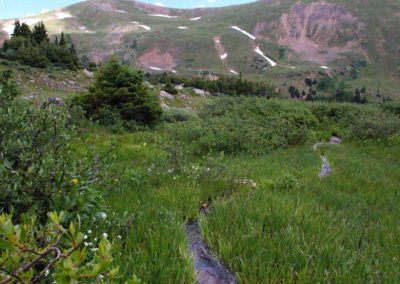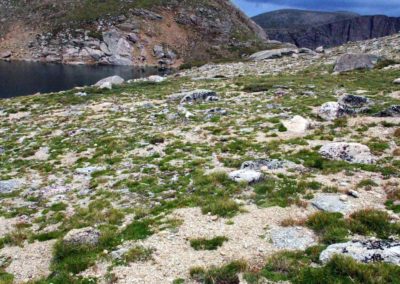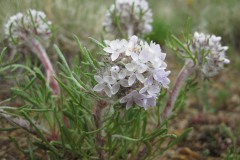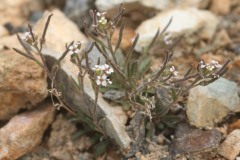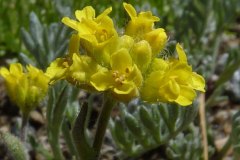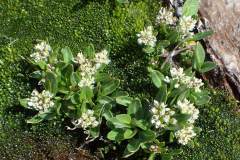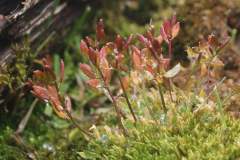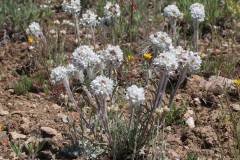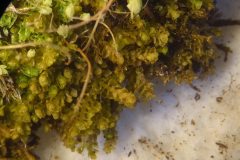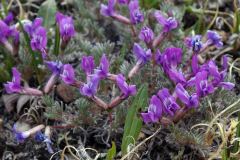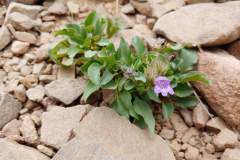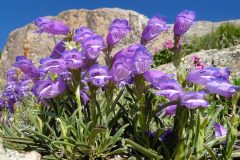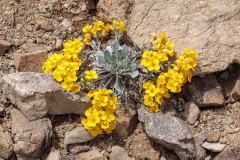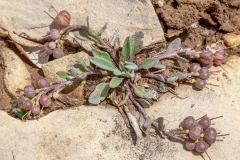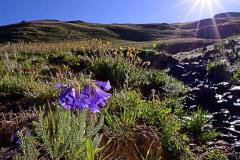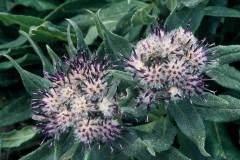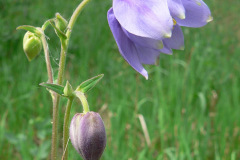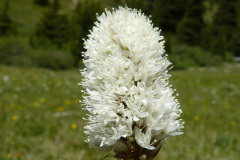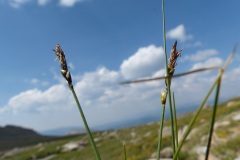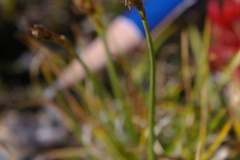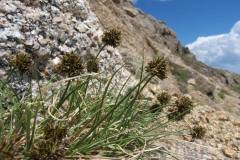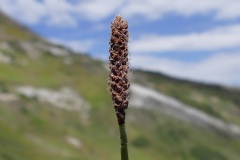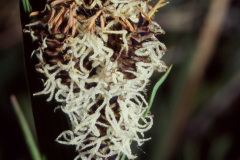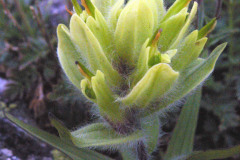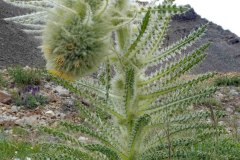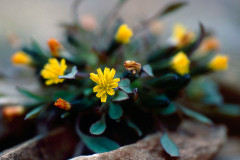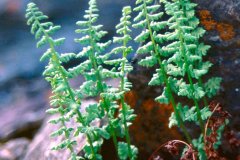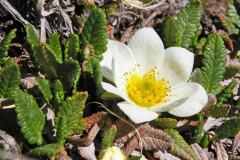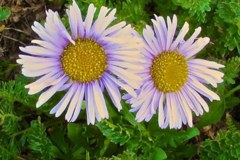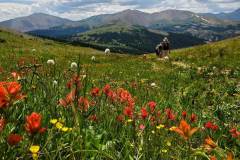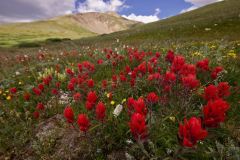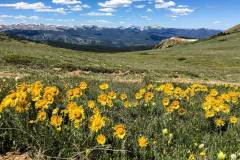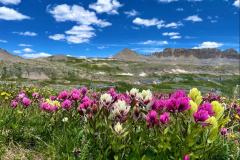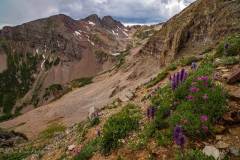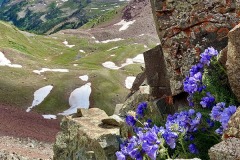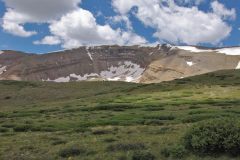Alpine Life Zone
It’s no secret to Coloradans that native plants have risen to the challenges of living in the alpine life zone, and in fact, in spite of the extremely harsh conditions, some of our most beautiful wildflowers flourish there. The alpine zone, which occurs here between 11,500 and 14,431 feet, is a place of high winds, short growing seasons, and intense ultraviolet radiation from the sun. The adaptations required by plants to exist in this harsh environment also make them among the most interesting.
Although annual precipitation in the alpine is between 40-60 inches and humidity is frequently high, thin soils and steep slopes make water retention a challenge. When combined with the very short growing season – only about one and half months, from July to mid-August, the conditions mean that trees cannot exist there, thus, the alpine exists above the treeline.
However several plant communities, mostly herbaceous perennials (wildflowers) and
graminoids (grasses and grass-like plants) with a wide diversity of species, have made the necessary adaptations to grow in the alpine. These communities are not discrete, they mix and mingle; certain plants inhabit nearly all them, while some are specialized to very specific sites only.
READ MORE
It’s useful to know a little bit about a few of the more common alpine landforms when learning to understand and identify its plants. The complex topography includes ridge tops, exposed saddles, talus and scree slopes, fell field, dry turf, and several types of wetter areas which can be ephemeral or permanent. Meadows and marshes occur on the more level and lower areas.
Dry turf with deeper, more developed soils can become established on gentler slopes, flat ridges, valleys, and basins where the soil has become relatively stabilized and the water supply is more-or-less constant. It should be noted, though, that it can take many hundreds of years to develop an inch of soil in this place. Areas bordering streams, or springs and pockets under melting snow banks, are places where the more water-dependent plants congregate.
Fell fields are those open rocky spaces scoured by fierce winds that keep them free of snow in winter and usually found on the upper slopes. The word itself is derived from from the Gaelic word fell, meaning stone; thus we have a field of stone. Often the effect of frost shattering the rock will cause recognizable patterns to form here. What grows in these stony exposed places with shallow, poorly developed soil? Cushion plants, mosses, and lichens do. Vegetation is sparse in the fell field, typically covering only between 15 and 50% of the area.
Cushion plants are common throughout the alpine and have a special role as facilitators. As their name implies, cushion plants hug the ground in protective mounds, avoiding winds and trapping heat and moisture, essentially forming their own microclimates. Their strong, thick, perennial tap-roots poke down into soil pockets or insert themselves into the clefts and crannies been rocks, where they can descend as much as two feet or more to obtain water. Cushion plants are considered a foundation species because they provide a habitat for other plants, ones that might not be able to come in and inhabit bare soil.
Heading downslope from the fell fields where the dry turf and meadows form, taller plants can survive, and the height of the blooming season is closer to midsummer instead of the earlier blooms of the fell field. And at the lowest borders of the alpine dense thickets of willows (Salix species), the tallest of the alpine plants reign supreme; some individuals among these specimens are many of thousands of years old.
The alpine is unique in so many ways. Although it may seem counter-intuitive, alpine areas host a much higher diversity of plant species than the forested areas below them. They also are home to a high percentage of endemic plants, meaning plants that can grow there and nowhere else. And in a classical paradox, the extremely harsh conditions of the alpine have created one of the most delicate of ecosystems, small disruptions have big impacts. Human interactions, footsteps, tire tracks, litter, and all the associated et ceteras cause damage that take decades to repair, if it can be repaired at all.
The collective alpine zones in Colorado also provide twenty percent of our stream flow. Acting like a sponge, it absorbs snow and melt water, releasing it downslope to a thirsty land below throughout the summer. Native plants are the ‘enablers’ here, without them, the soil would loose its ability to retain moisture. The alpine provides benefits of many kinds, we certainly want to enjoy it, but also to recognize its value and to enjoy it with appropriate caution.
~Sue Dingwell
Selected Bibliography
Ackerfield, Jennifer, Flora of Colorado, Botanical Research Institute of Texas Press, 2015
Bowman, W., Alpine Vegetation: Patterns of Biodiversity and Response to Environmental Change. Retrieved March 2, 2021, from: https://slideplayer.com/slide/4951209/
Griggs, Robert F. “Competition and Succession on a Rocky Mountain Fellfield.” Ecology, vol. 37, no. 1, 1956, pp. 8–20. JSTOR, www.jstor.org/stable/1929664. Accessed 2 Apr. 2021.
NatureServe Explorer 2.0, NatureServe, explorer.natureserve.org/Taxon/ELEMENT_GLOBAL.2.722857/Rocky_Mountain_Alpine_Turf.
Zwinger, Ann, and Beatrice E. Willard. Land above the Trees: a Guide to American Alpine Tundra. Johnson Books, 1996.
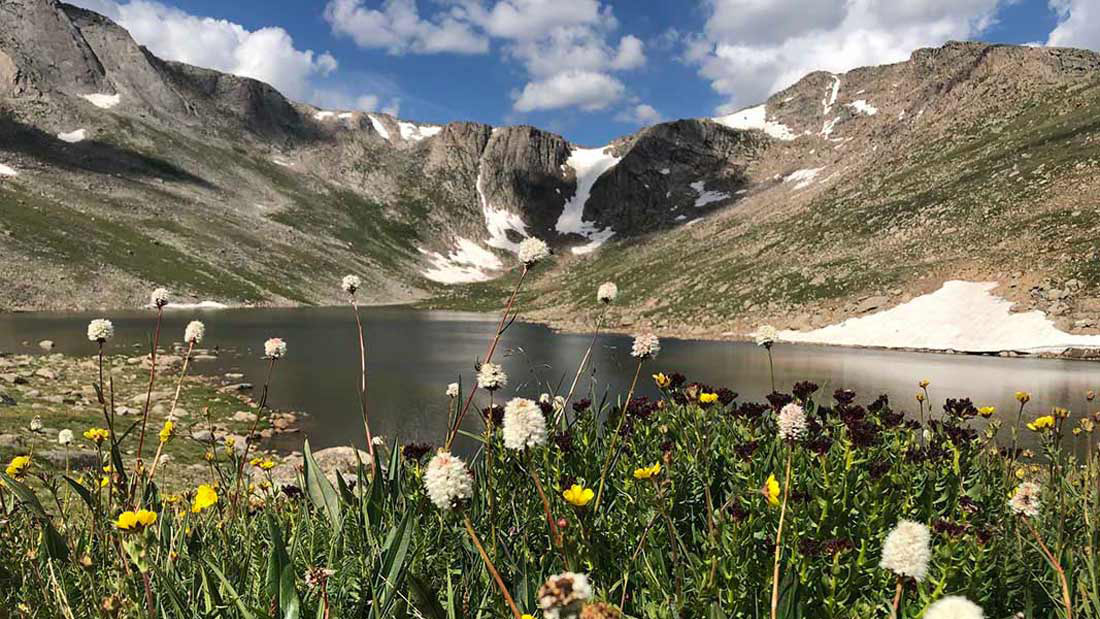
Plant Communities in the Alpine Zone
Click on Photos Below for More Information
Plants of the Alpine Zone
Plant photos are in alphabetical order by scientific name.
Click on a photo to get started.
Then use the left-right arrows to scroll to the next image.
Click the arrow on the bottom left to see a slideshow.
Click the “i” to see information about the plant.
Click on the bottom down arrow to remove the thumbnail carousel

